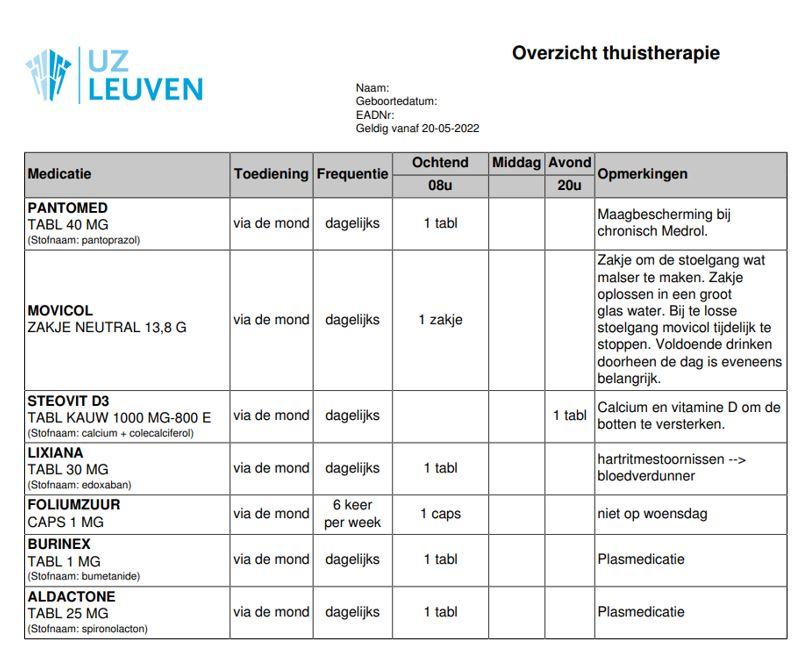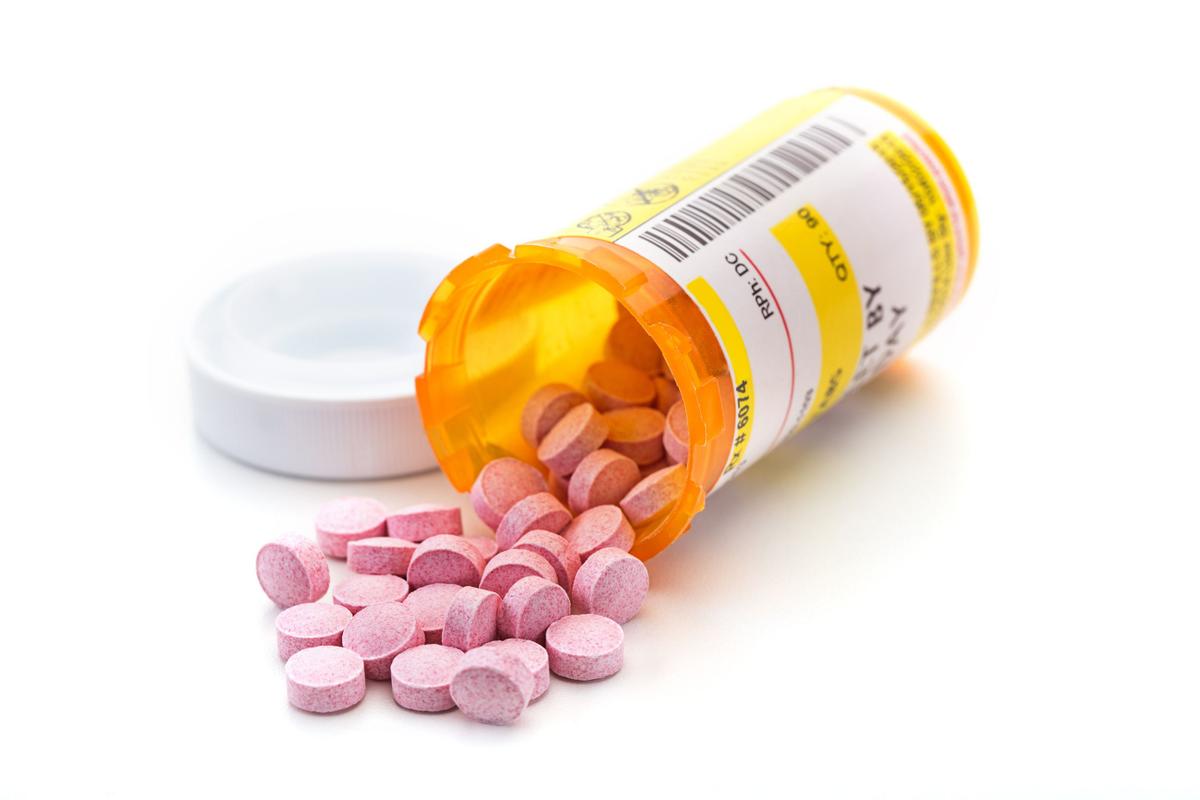
Example of a medication schedule in Dutch.
Medication schedule
To keep a good and clear overview of your medication, it is important to get an up-to-date medication schedule from your healthcare provider. This overview will help you take your medication correctly at home.
If necessary, your healthcare provider will adjust your medication schedule after a consultation or admission or add new medication to the overview. This way, you have a clear picture of your (new) therapy and your healthcare providers in the first line (e.g. your GP, your pharmacists, possibly a home nurse) also see immediately which medicines you are treated with.
The medication schedule during and after your appointment
- Ask your doctor for a medication schedule when you leave hospital. That way, you won't forget what was agreed once you've made it home.
- Keep the schedule and follow the instructions carefully.
- Do you have a new doctor's appointment or are you being admitted? Then be sure to take the medication schedule with you.
A paper prescription in Dutch.
Prescriptions
Since September 2021, it is possible that medication prescriptions are no longer be printed out, but linked directly to your electronic identity card (eID).
As a patient or carer, you always have the right to still request a paper printout (the 'proof of electronic prescription', see image).
The doctor can also send this barcode to your personal e-mail address or to your medical record mynexuzhealth, if you wish.
Apps and websites
Several apps and websites enable you to consult an overview of all your available prescriptions, for example
- the 'My Medicines' app, available for iOS and Android
- Helena
- the 'Prescription in your pocket' app or website
- the myhealth.be website
- the myhealthviewer website
- the mynexuzhealth app or website
- ...
At the pharmacy
When you go to a community pharmacy, the pharmacist can request your prescriptions in several ways to deliver the medication:
- By scanning your eID: this gives the pharmacist an overview of all active prescriptions and allows you to indicate exactly which medication you want to collect.
- By scanning the barcode on paper, in an e-mail or in one of the available apps: this gives the pharmacist immediate access to that prescription.
- By entering your national registry number when the pharmacist has a therapeutic relationship with you. This therapeutic relationship is created when your pharmacist scans your eID at least once every 15 months. Again, this gives the pharmacist an overview of all your open prescriptions.
